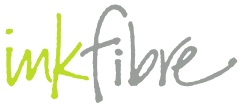Every term, our
CTS Co-op offers splendid workshops related to the field of fibre arts. This summer I was able to participate in three of them.
The first one,
Natural Dye Printing, took place in early June as part of the CTS
's Sustainable Design Series and offered by former member Thea Haines. During these two sessions, Thea delivered a clear and very engaging introduction to various basic, yet rich techniques within the discipline. For a few hours that weekend we became alchemists deeply involved in the processes, discovering the gentle nature of the materials while achieving surprising and alluring results.
We started by reviewing the very important steps of pre-treating (better known as
mordanting) the fabric so that it could easily "take" the dyes (1). We followed by creating very useful colour charts with the aid of "thickened" dyes (such as pomegranate, black walnut, osage orange, madder and Brazil wood, to name a few) plus
iron and
allum as "colour changers" (2). The last step consisted in "steaming" these charts to "set" the colours properly (3).
 |
| 3-The charts were rolled in muslin, then coiled and later placed in the steamer. |
 |
| Steamer. A large rice bamboo steamer worked perfectly. |
After carefully studying the charts, the final choices were made, and so the printing started by using different mark-making tools, blocks and most certainly, silk screens.
 |
| Some mark-making tools and blocks (commercial and hand-made) provided by Thea. |
The following are images of one design I'm just taking out for a "test drive" for which the natural dyes worked perfectly!
 |
| The first image is a close up of the screen against the window, I've
always loved how light filters through the screens. The second image is
of cloth dyed with logwood and "discharged" with citric acid (!!!!). The
back of the fabric shows how thorough the colour extraction was. The
third image is of my favourite print resulting from these two days. The
perennial considerations: editing and end use. |
---::---::---::---
RESOURCES
Instructor: You may look up Thea's blog and website by clicking
here and
here.
Suppliers:
Maiwa, of course. And from my end, while in Asheville a couple of weeks ago, I visited
Earth Guild and as expected, it had pretty much everything.
Another voice: Please visit our CTS Co-op's blog, where our own Roohi Qureshi writes about the workshop while showcasing more images and a fun video of her print! A very complete resource guide is offered as well. You may check it out
here.
Book: The most recommended was
Wild Color by Jenny Dean.




















